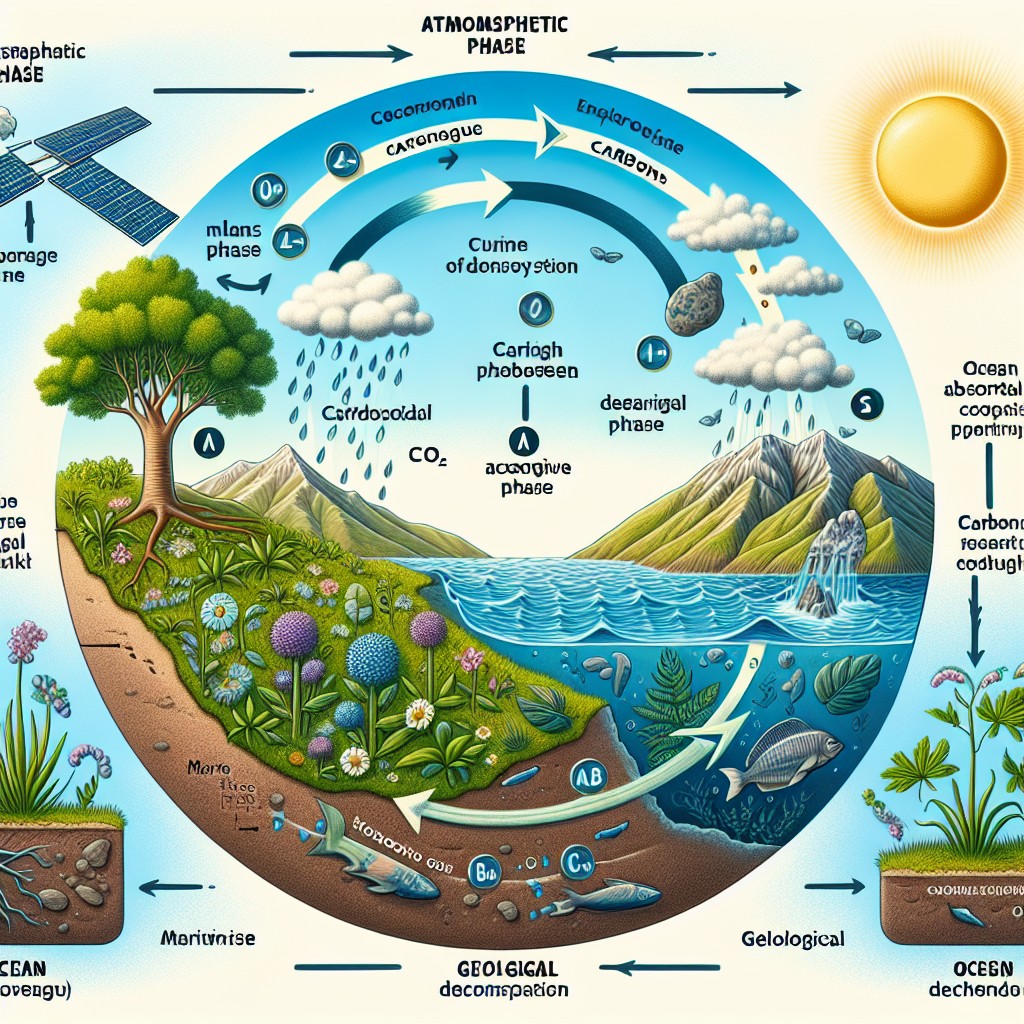Gallium is a unique and uncommon metal that has captured the attention of scientists and researchers around the world. It is a soft, silvery-white metal that is found in small amounts in various minerals. Gallium is known for its low melting point, which is just above room temperature, making it one of the few metals that can melt in your hand. This property, along with its other unique characteristics, has led to its use in a wide range of applications in technology, industry, medicine, and even space exploration.
Summary
- Gallium is a rare metal with unique properties that make it useful in a variety of industries.
- Gallium has a low melting point and can be used in semiconductors, LEDs, and solar cells.
- The discovery of gallium is a fascinating story involving a French chemist and a missing element in the periodic table.
- Gallium exhibits unusual behaviour at low temperatures, including becoming a liquid when held in the hand.
- Gallium has potential uses in medicine and biotechnology, including as a contrast agent in MRI scans.
The Physical and Chemical Properties of Gallium
Gallium possesses several interesting physical and chemical properties that set it apart from other metals. It has a melting point of 29.76 degrees Celsius (85.57 degrees Fahrenheit), which is just below the average human body temperature. This low melting point allows gallium to melt when held in the hand, giving it a fascinating and somewhat magical quality.
In addition to its low melting point, gallium also has a high boiling point of 2,204 degrees Celsius (4,000 degrees Fahrenheit), making it suitable for use in high-temperature applications. It is a relatively dense metal, with a density of 5.91 grams per cubic centimeter, and it has a low vapor pressure at high temperatures.
Chemically, gallium is considered a post-transition metal and shares some similarities with aluminum and indium. It is not found in its pure form in nature but is instead extracted from various minerals such as bauxite and sphalerite. Gallium is highly reactive with oxygen and water, forming a protective oxide layer on its surface that prevents further oxidation.
Gallium’s Role in Technology and Industry
Gallium’s unique properties make it an essential component in various technologies and industries. One of the most significant applications of gallium is in semiconductors. Gallium-based semiconductors, such as gallium arsenide (GaAs) and gallium nitride (GaN), have superior electrical properties compared to traditional silicon-based semiconductors. These gallium-based semiconductors are used in the production of high-speed electronic devices, such as transistors, diodes, and lasers.
Gallium is also used in the production of light-emitting diodes (LEDs). Gallium nitride-based LEDs are more energy-efficient and have a longer lifespan than traditional incandescent bulbs. They are widely used in lighting applications, including streetlights, automotive lighting, and displays.
Another important application of gallium is in the field of photovoltaics. Gallium arsenide is used in the production of high-efficiency solar cells that can convert sunlight into electricity. These solar cells are commonly used in space applications, where efficiency and reliability are crucial.
The Fascinating History of Gallium Discovery
| Year | Discovery | Discoverer |
|---|---|---|
| 1875 | Discovery of Gallium | Paul-Émile Lecoq de Boisbaudran |
| 1876 | Confirmation of Gallium | Lecoq de Boisbaudran |
| 1886 | Isolation of Gallium | Lecoq de Boisbaudran |
| 1909 | Production of Gallium | Frank Spedding |
| 1933 | Discovery of Gallium’s Radioactivity | Irène Joliot-Curie and Frédéric Joliot |
The discovery of gallium is a fascinating story that involves several key figures and their contributions. In 1875, French chemist Paul-Émile Lecoq de Boisbaudran discovered gallium while studying the spectroscopic analysis of zinc ores. He named the element “gallia” after his home country, France.
Lecoq de Boisbaudran was able to isolate gallium by using a series of chemical reactions to separate it from other elements. He found that gallium had similar properties to aluminum and indium but possessed unique characteristics that set it apart.
The discovery of gallium was significant because it filled a gap in the periodic table and provided further evidence for Dmitri Mendeleev’s periodic law. Mendeleev had predicted the existence of an element with properties similar to aluminum but with a lower atomic weight. Gallium’s discovery confirmed Mendeleev’s predictions and solidified the periodic table as a fundamental tool in chemistry.
Gallium’s Unique Behaviour at Low Temperatures
Gallium exhibits some fascinating behavior at low temperatures, particularly when it is in its liquid state. At temperatures below its melting point, gallium becomes a supercooled liquid, meaning it remains in a liquid state even though it is below its freezing point. This property allows gallium to be used in cryogenics and superconductivity applications.
In cryogenics, gallium is used as a coolant for various scientific and medical applications. Its low melting point and high boiling point make it an ideal choice for cooling systems that require precise temperature control. Gallium-based coolants are used in superconducting magnets, which are used in magnetic resonance imaging (MRI) machines and particle accelerators.
Gallium also exhibits superconductivity at extremely low temperatures. Superconductivity is a phenomenon where a material can conduct electricity with zero electrical resistance. Gallium-based alloys, such as gallium-indium-tin (GaInSn), have been found to exhibit superconductivity at temperatures close to absolute zero (-273.15 degrees Celsius or -459.67 degrees Fahrenheit). This property has potential applications in the development of high-performance electronic devices and energy-efficient power transmission.
Gallium’s Use in Medicine and Biotechnology

Gallium has found several applications in the field of medicine and biotechnology due to its unique properties. One of the most significant uses of gallium in medicine is its ability to inhibit the growth of certain bacteria and fungi. Gallium compounds have been used as antimicrobial agents to treat infections caused by antibiotic-resistant bacteria, such as methicillin-resistant Staphylococcus aureus (MRSA).
Gallium also has potential applications in cancer treatment. Studies have shown that gallium compounds can selectively target cancer cells and inhibit their growth. Gallium-based drugs are being investigated as potential treatments for various types of cancer, including prostate, breast, and lung cancer.
In biotechnology, gallium is used in the production of radiopharmaceuticals for diagnostic imaging and therapy. Gallium-67, a radioactive isotope of gallium, is used in positron emission tomography (PET) scans to detect and monitor the progression of certain diseases, such as lymphoma and lung cancer.
The Environmental Impact of Gallium Mining and Production
Like any other metal mining and production process, gallium mining and production have environmental impacts that need to be considered. The extraction of gallium from minerals requires energy-intensive processes that can contribute to greenhouse gas emissions and air pollution. Additionally, the disposal of waste materials from gallium production can lead to soil and water contamination if not properly managed.
To mitigate these environmental impacts, it is essential to implement sustainable mining and production practices. This includes using renewable energy sources for power generation, implementing efficient recycling programs to reduce waste, and adopting responsible waste management practices.
Furthermore, research is being conducted to develop alternative methods for gallium extraction that are more environmentally friendly. These include the use of bioleaching techniques, where microorganisms are used to extract gallium from minerals, and the development of more efficient recycling processes.
The Future of Gallium in Sustainable Energy Technology
Gallium plays a crucial role in sustainable energy technology due to its unique properties. One of the most promising applications of gallium is in the field of photovoltaics. Gallium-based solar cells have shown higher efficiency compared to traditional silicon-based solar cells. As the demand for renewable energy continues to grow, gallium-based solar cells could become a significant player in the global energy market.
Gallium is also being explored for its potential use in next-generation batteries. Gallium-based batteries have shown promising results in terms of energy density and charge-discharge efficiency. These batteries could be used in electric vehicles and grid-scale energy storage systems, helping to reduce reliance on fossil fuels and promote a more sustainable energy future.
Gallium’s Role in Space Exploration and Research
Gallium has found several applications in space exploration and research due to its unique properties. One of the most significant uses of gallium in space is in the production of solar cells for spacecraft. Gallium arsenide-based solar cells are used in satellites and space probes due to their high efficiency and reliability in extreme conditions.
Gallium is also used in the production of thermoelectric generators (TEGs) for space missions. TEGs convert heat into electricity using the Seebeck effect, and gallium-based materials have shown excellent thermoelectric properties. These generators are used to power spacecraft during long-duration missions, where solar power is not feasible.
Furthermore, gallium-based alloys are being investigated for their potential use in rocket propulsion systems. These alloys have high specific impulse, which is a measure of the efficiency of a rocket engine. By using gallium-based alloys, it may be possible to develop more efficient and cost-effective rocket engines for space exploration.
The Potential Risks and Hazards of Gallium Handling and Exposure
While gallium is generally considered safe to handle, there are some potential risks and hazards associated with its use. Gallium can cause skin and eye irritation if it comes into contact with the skin or eyes. It is also toxic if ingested or inhaled in large quantities.
To minimize the risks associated with gallium handling and exposure, it is important to follow proper safety precautions and guidelines. This includes wearing appropriate personal protective equipment, such as gloves and goggles, when working with gallium. It is also important to handle gallium in a well-ventilated area to prevent inhalation of fumes.
In conclusion, gallium is an uncommon metal with unique properties that make it valuable in various fields. Its low melting point, high boiling point, and excellent electrical properties have led to its use in technology, industry, medicine, and space exploration. Gallium’s discovery and subsequent applications have contributed to advancements in science and technology and have opened up new possibilities for sustainable energy and space exploration. However, it is important to consider the environmental impact of gallium mining and production and to handle gallium safely to minimize potential risks and hazards. Overall, gallium is a fascinating metal that continues to captivate researchers and scientists with its extraordinary properties and potential applications.
FAQs
What is Gallium (Ga)?
Gallium (Ga) is a chemical element with the symbol Ga and atomic number 31. It is a soft, silvery-white metal that is liquid at room temperature.
Where is Gallium found?
Gallium is not found in its elemental form in nature, but it is found in small amounts in various minerals such as bauxite and sphalerite. It is also extracted from the by-products of zinc and aluminium production.
What are the uses of Gallium?
Gallium has a variety of uses, including in the production of semiconductors, LEDs, and solar cells. It is also used in the manufacture of high-temperature thermometers, as a component in some alloys, and in medical imaging.
Is Gallium toxic?
Gallium is not considered toxic, but it can cause skin irritation and should be handled with care. Ingesting large amounts of gallium can cause gastrointestinal irritation.
What are the physical properties of Gallium?
Gallium has a melting point of 29.76°C and a boiling point of 2204°C. It is a soft metal with a density of 5.91 g/cm³ and a low toxicity. It is also a good conductor of electricity.
What are the chemical properties of Gallium?
Gallium is a reactive metal that reacts with most acids and alkalis. It also reacts with oxygen to form gallium oxide. It has a valence of +3 and can form both covalent and ionic compounds.


